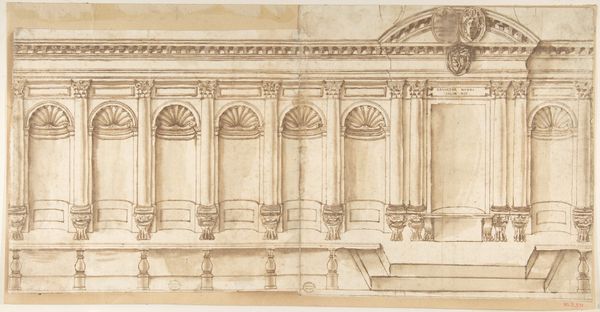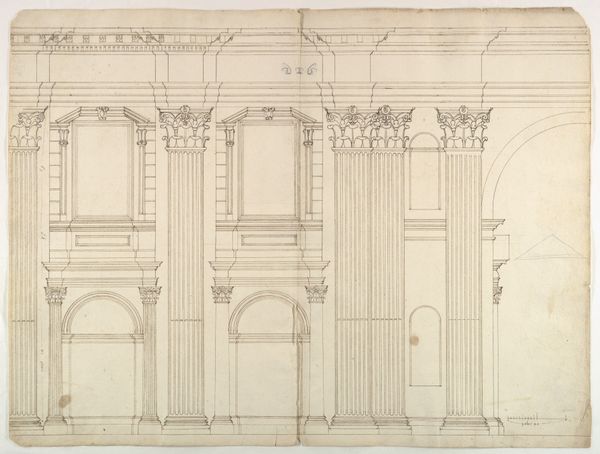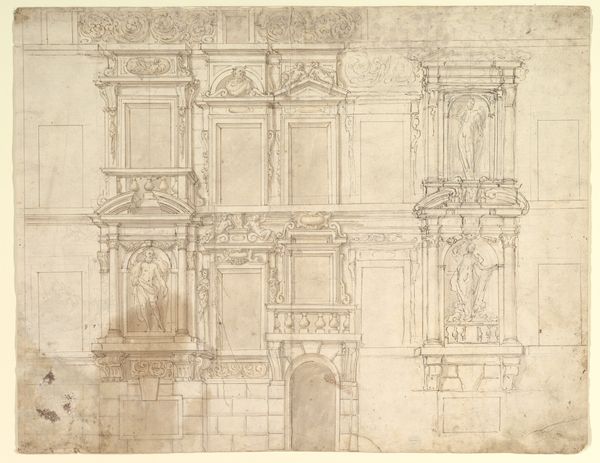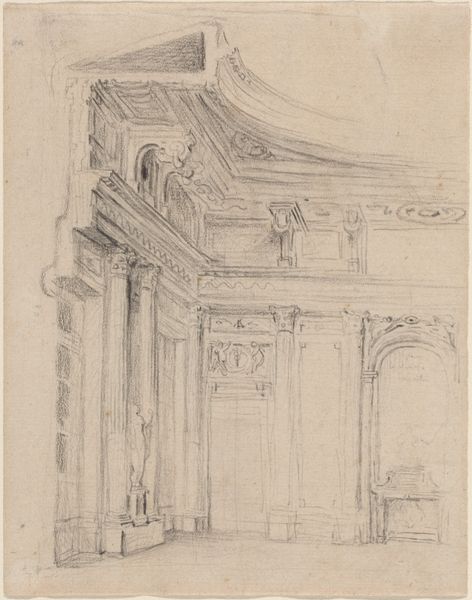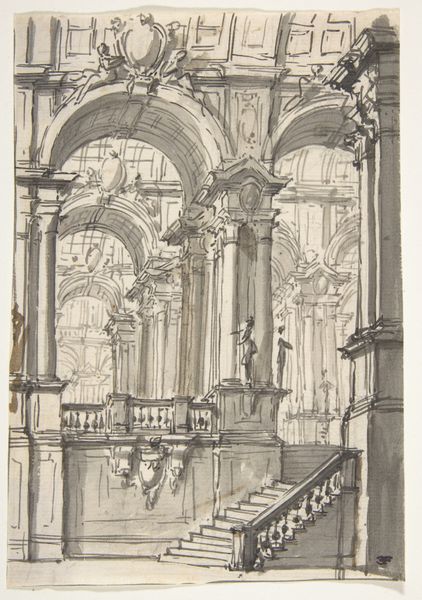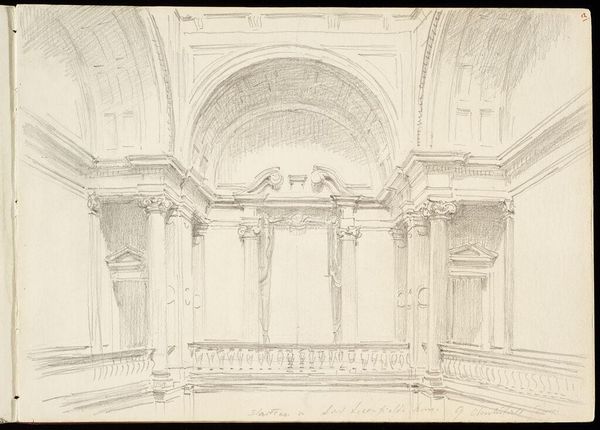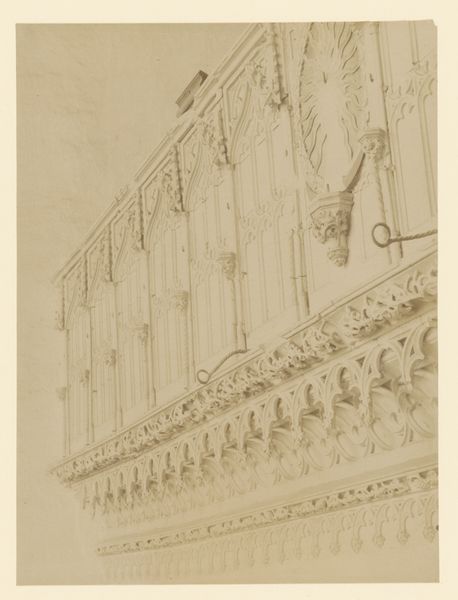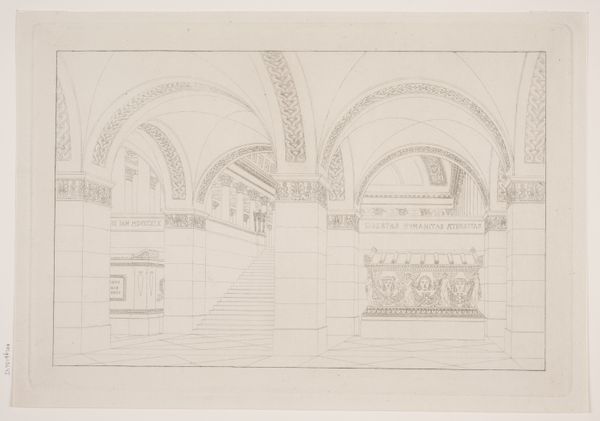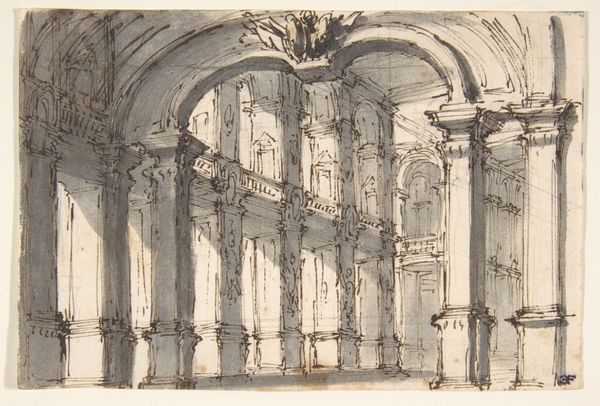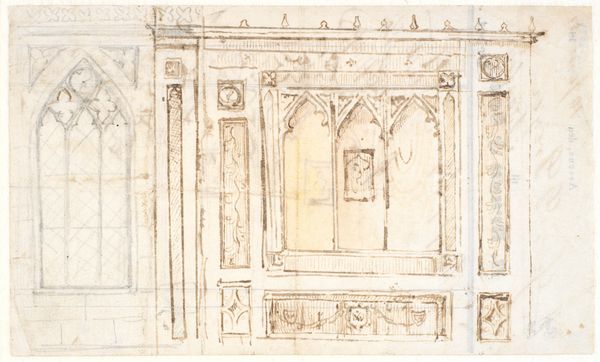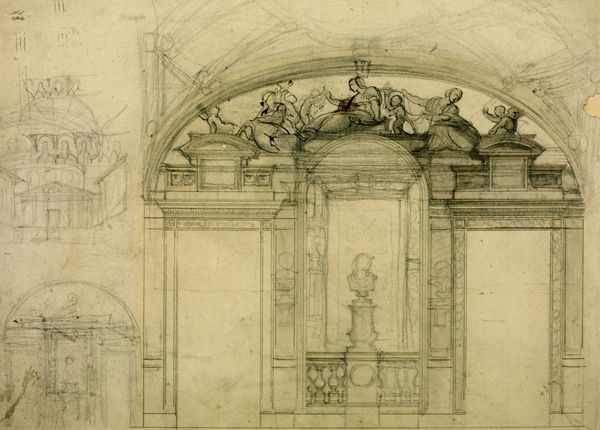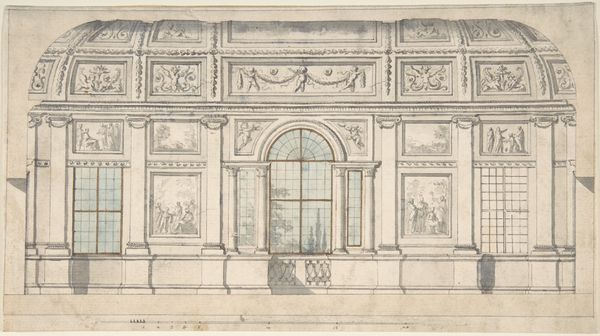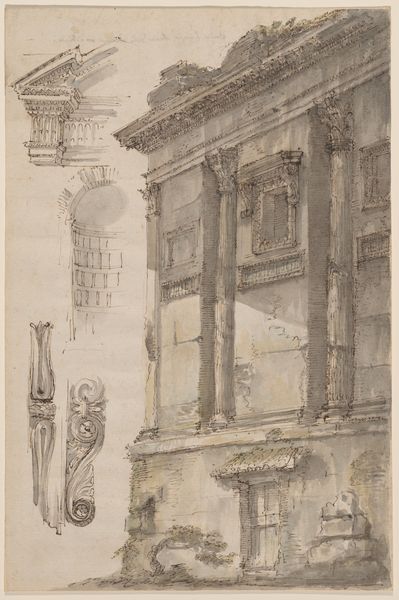
drawing, print, ink, architecture
#
pen and ink
#
architectural sketch
#
drawing
#
mechanical pen drawing
# print
#
etching
#
11_renaissance
#
ink
#
sketchwork
#
geometric
#
detailed observational sketch
#
column
#
pen-ink sketch
#
arch
#
architectural drawing
#
line
#
pen work
#
architecture drawing
#
architecture
Dimensions: 10-1/2 x 7-3/4 in. (26.7 x 19.7 cm)
Copyright: Public Domain
Editor: Here we have "Arcade in the Balustrade," a pen and ink drawing likely from the 16th century, made by an anonymous artist. It feels almost like looking at the plans for a theatrical set, doesn't it? With all its arches and columns, it's quite imposing. What story do you think this architectural rendering is telling? Curator: That’s an astute observation about the theatrical element. Think about the Renaissance and its obsession with classical architecture, not just in buildings, but in staging elaborate performances. What we see here isn't just an arcade; it's a space ripe with the potential for drama, for spectacle. The balustrade itself creates a barrier, a visual division between audience and performer, hinting at social hierarchies and the act of spectatorship. Editor: So, the drawing comments on how stages reflect and reinforce societal structure? Curator: Precisely. The rigid geometry speaks to the control and order that the Renaissance sought to impose, both artistically and politically. Who gets to be "on stage" and who is relegated to viewing from below? Even details like the carefully rendered columns—symbols of power and stability—serve to emphasize these power dynamics. Have you noticed any visual tensions? Editor: The unfinished section on the right feels like a deliberate choice; like an invitation to question completion itself. Curator: Yes, absolutely. This unfinished quality undermines any notion of static perfection. It reflects the era's turbulent social and political shifts, resisting simple interpretations. Art is always political, but these decisions highlight how art of the 16th century helped to question norms and ideas on public stages. Editor: I see it differently now. This is more than an architectural sketch. It's a subtle commentary on how society itself is staged. Curator: And how the act of staging always carries social and political implications. By viewing this sketch we engage and interpret that complex context.
Comments
No comments
Be the first to comment and join the conversation on the ultimate creative platform.
